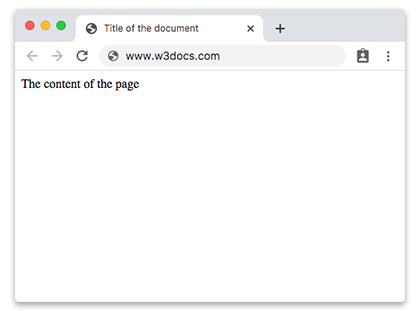The <html> tag is a root element of an HTML document. It contains all HTML elements that inform the browser that this is an HTML document. Before the <html> tag we must put only the <!DOCTYPE> declaration, which informs about the HTML version used in the document.
The child elements of the <html> tag are:
- The <head> tag which contains technical information for browsers enclosed in <title>, <script>, <link> and other tags).
- The <body> tag which defines the content of an HTML document (text, images, links, etc.).
We recommend using the <html> tag with the lang attribute, which defines the language of the document. It simplifies the indexing of a web page, helps browsers to correctly display national characters, and devices that read from the screen to correctly determine the pronunciation.
<html lang="en">Syntax
The <html> tag comes in pairs. The content is written between the opening (<html>) and closing (</html>) tags.
Example of the HTML <html> tag:
<!DOCTYPE html>
<html lang="en">
<head>
<title>Title of the document</title>
</head>
<body>
The content of the page
</body>
</html>Result

Attributes
| Attribute | Value | Description |
|---|---|---|
| manifest | URL | Specifies the URL of the resource where the manifest is located with the list of resources that should be cached in the user's browser (for offline viewing). |
| xmlns | https://www.w3.org/1999/xhtml | Specifies the XML namespace for the document (if the XHTML document correspondence is required). Required in XHTML. In HTML 5 it isn’t required. |
The <html> tagsupports the Global Attributes and the Event Attributes.
Browser support
|
|
|
|
|
|
|---|---|---|---|---|
| ✓ | ✓ | ✓ | ✓ | ✓ |
Practice Your Knowledge
What is the function of the HTML <html> tag?
Correct!
Incorrect!
Quiz Time: Test Your Skills!
Ready to challenge what you've learned? Dive into our interactive quizzes for a deeper understanding and a fun way to reinforce your knowledge.